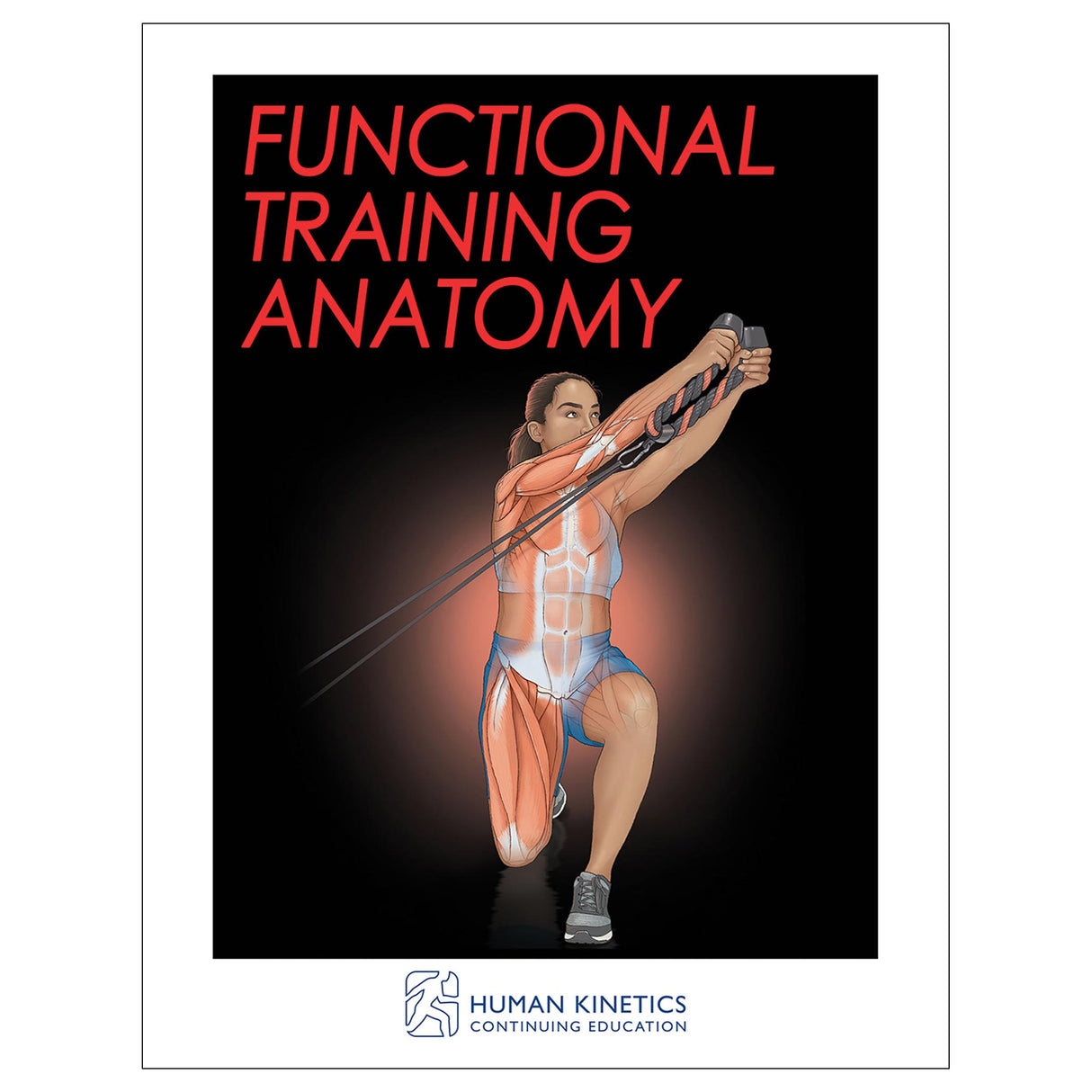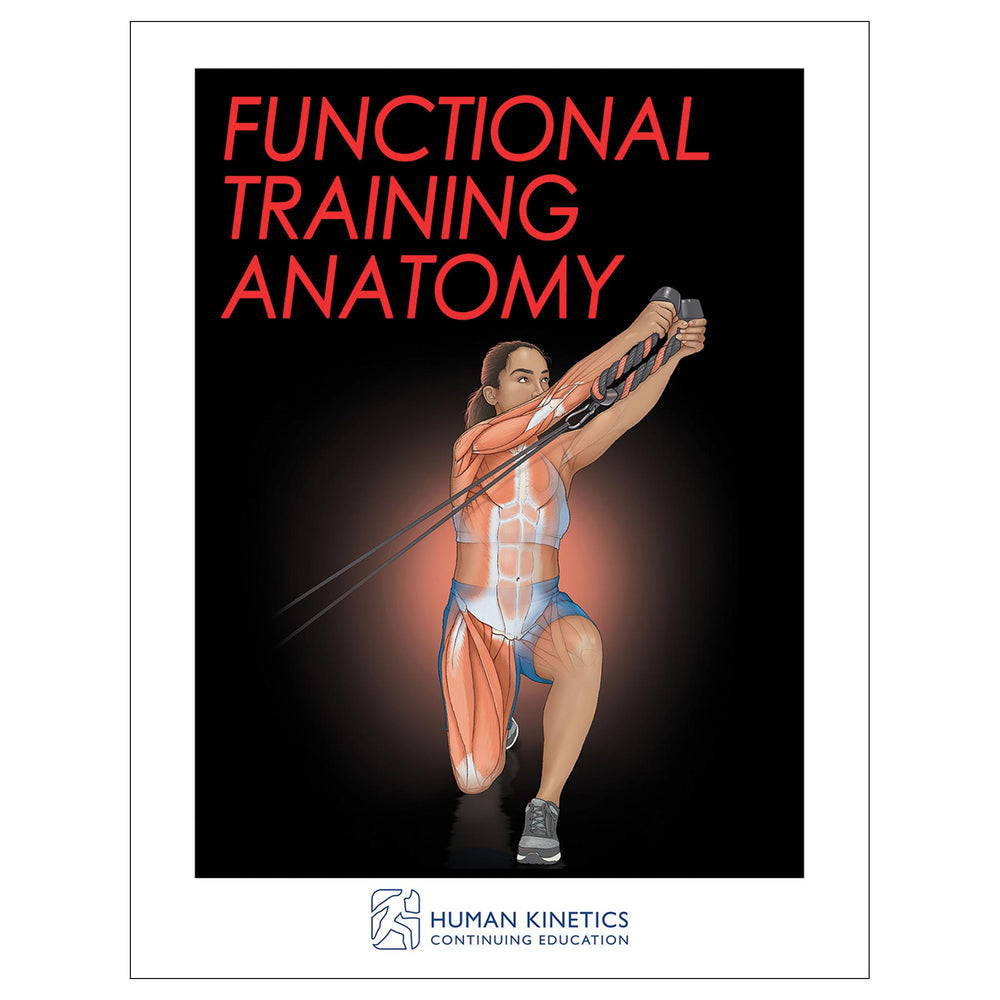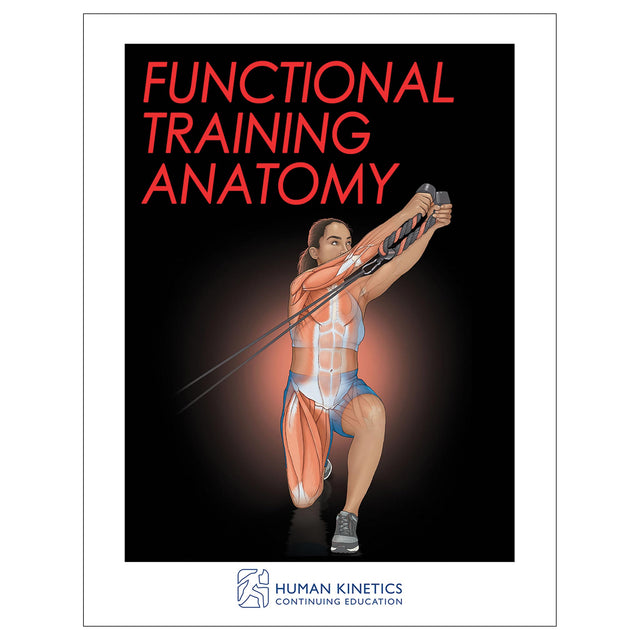Functional Training Anatomy Online CE Exam With Ebook
Author: Human Kinetics
$93.95 CAD
Human Kinetics strongly recommends that you complete your exam within the calendar year of your date of purchase to ensure approved credits do not expire for your organization.
- Functional Training Anatomy ebook
- Online continuing education exam
Beginning with a clear definition of what functional training entails, you will learn about the importance of mobility training and its impact on movement quality, performance, and injury reduction. Use the warm-up activities to prepare clients for high-intensity activities. Use the medicine ball and plyometric exercises to teach force production and absorption and to develop power with Olympic lifts, kettlebell swings, and jumping exercises. Improve strength in the upper body, lower body, and core with hip-dominant, knee-dominant, pushing, pulling, and core exercises.
See the inner workings of each of the exercises with superb full-color illustrations that show the primary and secondary muscles and connective tissue being used. The detailed instructions for these multiplanar and unilateral exercises ensure you know how to teach execution of each movement correctly and safely. The Functional Focus element shows how the exercises translate to specific activities, whether that be an explosive athletic move or simply moving a box.
After reading the ebook, certified professionals can take the companion CE exam to earn continuing education credits.
Learning Objectives
- Define functional training and identify the components of a well-rounded functional training program.
- Describe the three planes of motion used to classify human movement.
- Explain the anterior and posterior oblique systems and how to activate them.
- Distinguish between joint mobility, flexibility, and mobility.
- Execute exercises for all types of functional training properly.
- Identify the primary muscles involved in individual exercises for each type of functional training.
- State the functional focus of individual functional training exercises and explain why each one should be used in a training program.
- Define motor control.
- Explain why certain movement preparation exercises are chosen for each training program.
- Discuss the importance of plyometric and medicine ball exercises for the general population and athletes.
- Describe the force-velocity curve and how it can be applied to a functional training program.
- Differentiate the muscle fiber types.
- Recognize the four major categories of upper-body strength movements.
- Describe hip-dominant and knee-dominant movements.
- Explain the importance of unilateral lower-body training.
- Summarize “anti” core training.
- Design a functional strength training program.
Audience
Personal trainers, group exercise instructors, athletic trainers, and other certified fitness professionals.Chapter 2. Mobility Exercises
Chapter 3. Motor Control and Movement Preparation Exercises
Chapter 4. Plyometric and Medicine Ball Exercises
Chapter 5. Heavy Implement Power Exercises
Chapter 6. Upper-Body Strength Exercises
Chapter 7. Lower-Body Strength Exercises
Chapter 8. Core and Rotational Strength Movements
Chapter 9. Functional Strength Training Program Examples





